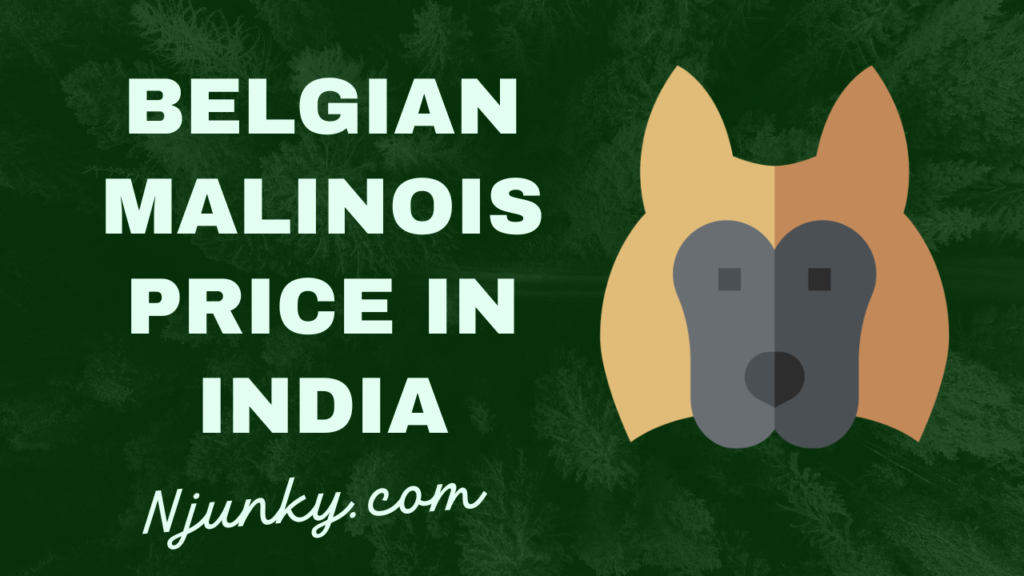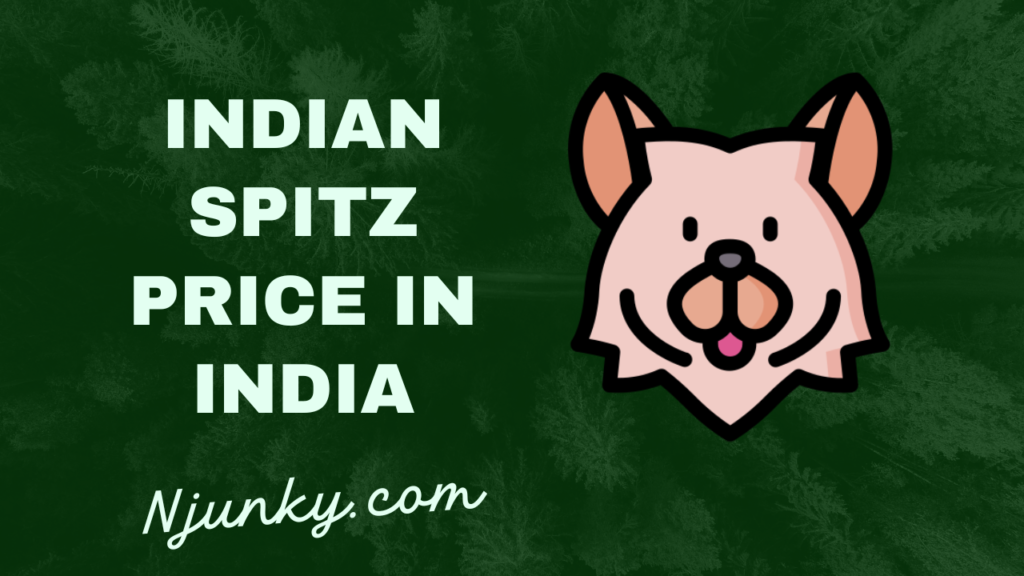The Great Dane, often referred to as the “Apollo of Dogs,” is a majestic and gentle giant that has captured the hearts of dog lovers around the world. Originating from Germany, this breed is known for its immense size, impressive stature, and friendly demeanor. Due to its popularity and unique characteristics, many individuals in India are intrigued by the prospect of owning a Great Dane as a pet.
However, before making the decision to bring home a Great Dane, it is essential to understand various factors, including the Great Dane price in India, associated with acquiring and caring for this magnificent breed. In this article, we will delve into the topic of the Great Dane price in India, providing an overview of the factors influencing the cost and the average price range one can expect to pay for a Great Dane puppy in the country. Whether you are a potential Great Dane owner or simply an enthusiast seeking information, this guide aims to shed light on the financial aspect of adding a Great Dane to your family.
- Average Great Dane Price In India
- Great Dane Price across different regions In India
- Types of Great Dane Colors
- Overview of Great Dane breed
- The popularity of Great Danes in India
- Factors Influencing Great Dane Price In India
- Comparison to other popular dog breeds
- History Of The Great Dane Breed
- Care and maintenance costs of Great Dane
- Where to find Great Danes for sale in India
- Tips on taking care of your Great Dane
- Final Thoughts
- FAQs
Average Great Dane Price In India
The average Great Dane price in India typically falls between ₹10,000 to ₹40,000. However, it is important to note that the cost of a Great Dane can vary depending on several factors, including the breeder’s reputation, the lineage of the puppy, the dog’s age, the location, and the overall demand for the breed.
Great Danes from reputable breeders, who maintain high standards of breeding and provide proper care for their dogs, tend to be priced at the higher end of the range. These breeders often invest time and resources into ensuring the health, temperament, and quality of their puppies. Additionally, their dogs may come from champion bloodlines or possess desirable traits, such as showing potential or exceptional conformation, which can significantly impact the Great Dane price in India.
On the other hand, Great Dane puppies from lesser-known breeders or pet stores may be available at a lower price point. However, it is crucial to exercise caution when dealing with such sources, as they may not prioritize the health and well-being of their animals or adhere to responsible breeding practices. Buying from a reputable breeder or adopting from a rescue organization is recommended to ensure the best possible start for your Great Dane.
It is essential to remember that the initial Great Dane price in India is only one aspect of the overall cost of owning a Great Dane. Additional expenses such as veterinary care, vaccinations, grooming, food, and accessories should be considered when budgeting for your new pet. Responsible ownership entails providing adequate care and attention to your Great Dane throughout its life.
Great Dane Price across different regions In India
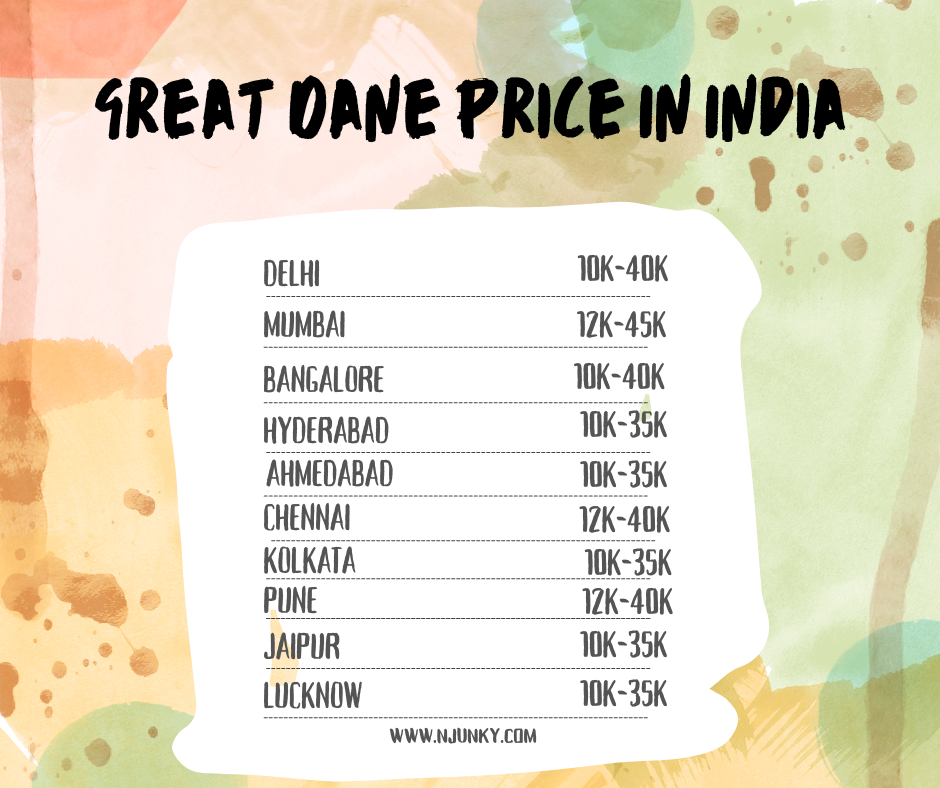
Great Danes are one of the most elegant and majestic dogs, known for their towering size and gentle nature. If you’re considering adding a Great Dane to your family, one of the first things you’ll need to consider is the cost. Great Dane price in India can vary greatly depending on where you live in India. To help you plan your budget, we’ve put together a list of Great Dane prices across 15 major cities in India.
| No | City | Average Price Range (INR) |
| 1 | Great Dane Price In Delhi | 10,000 – 40,000 |
| 2 | Great Dane Price In Mumbai | 12,000 – 45,000 |
| 3 | Great Dane Price Kolkata | 10,000 – 35,000 |
| 4 | Great Dane Price In Chennai | 12,000 – 40,000 |
| 5 | Great Dane Price In Bangalore | 10,000 – 40,000 |
| 6 | Great Dane Price Hyderabad | 10,000 – 35,000 |
| 7 | Great Dane Price In Ahmedabad | 10,000 – 35,000 |
| 8 | Great Dane Price In Pune | 12,000 – 40,000 |
| 9 | Great Dane Price Jaipur | 10,000 – 35,000 |
| 10 | Great Dane Price In Lucknow | 10,000 – 35,000 |
| 11 | Great Dane Price In Chandigarh | 12,000 – 40,000 |
| 12 | Great Dane Price In Kochi | 10,000 – 35,000 |
| 13 | Great Dane Price In Indore | 10,000 – 35,000 |
| 14 | Great Dane Price In Guwahati | 10,000 – 35,000 |
| 15 | Great Dane Price In Bhubaneswar | 10,000 – 35,000 |
Types of Great Dane Colors
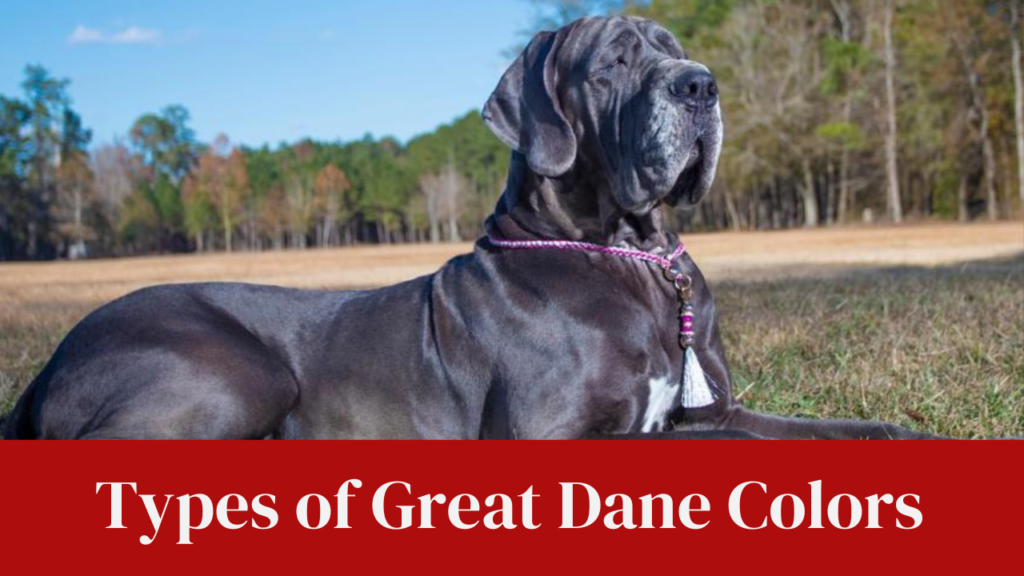
Great Danes come in various colors and patterns, which contribute to their unique and striking appearance. Here are the explanations for each of the seven types of Great Dane colors:
1. Fawn Great Dane:
Fawn is a commonly seen color in Great Danes. It refers to a light tan or beige coat that can range from a pale cream color to a deeper golden shade. Fawn Great Danes may have a black mask on their face or a black overlay on their ears and body.
2. Brindle Great Dane:
A Brindle is a pattern rather than a solid color. It features a base coat color (typically fawn) with dark stripes or streaks of black or a darker shade of the base color. Brindle Great Danes can have various patterns, from subtle striping to bold and distinct patterns.
3. Harlequin Great Dane:
Harlequin is a unique and highly sought-after color pattern in Great Danes. It consists of a predominantly white coat with irregular patches of black or dark gray. The patches are typically large and asymmetrical, creating a striking and eye-catching appearance.
4. Black Great Dane:
As the name suggests, Black Great Danes have a solid black coat without any markings or patterns. Black is a classic and elegant color, and it can make Great Danes look sleek and regal.
5. Blue Great Dane:
Blue refers to a coat color that appears as a diluted or grayish shade of black. Blue Great Danes have a bluish-gray coat that can range from a light silvery hue to a deeper steel gray. This color is achieved through a dilution gene that affects the production of pigments.
6. Merle Great Dane:
Merle is a unique and visually striking coat pattern found in Great Danes. It features patches or spots of diluted pigment (often in gray or blue shades) scattered on a base coat color (such as fawn or brindle). The merle pattern can create a marbled or mottled appearance.
7. Mantle Great Dane:
Mantle refers to a specific coat pattern consisting of a solid black base color with white markings. The white typically covers the chest, neck, parts of the legs, and the tip of the tail. The mantle pattern resembles a black cloak or mantle draped over the dog’s body.
Overview of Great Dane breed
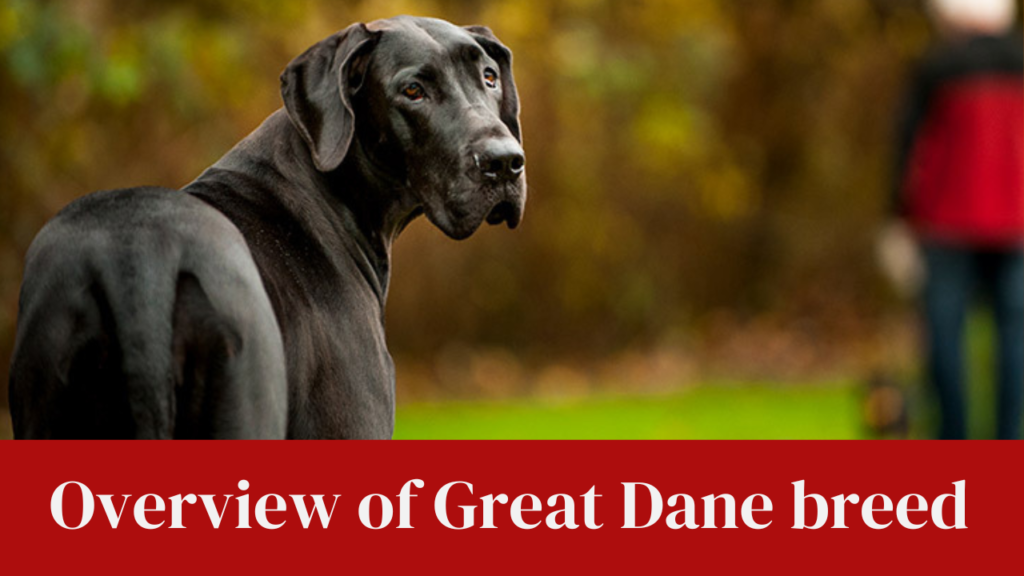
Great Danes are a popular and well-known breed of dog that originated in Germany. Here is an overview of the Great Dane breed:
Appearance:
Great Danes are known for their imposing size and elegant appearance. They are considered one of the tallest dog breeds in the world. Adult males typically stand between 30 and 34 inches (76-86 cm) at the shoulder and weigh around 140-175 pounds (64-79 kg), while adult females are slightly smaller and lighter. They have a muscular build with a deep chest, long legs, and a sleek, short coat that comes in a variety of colors, including fawn, brindle, black, blue, mantle, and harlequin.
Temperament:
Despite their large size, Great Danes are generally known for their friendly and gentle nature. They are often referred to as “gentle giants.” They are typically good-natured, affectionate, and loyal dogs that are well-suited for family life. Great Danes are generally good with children and can be protective of their family members. They are usually good with other dogs and pets if properly socialized from a young age. However, due to their size, it’s important to supervise their interactions with smaller animals or children to prevent accidental injury.
Training and Exercise:
Great Danes are intelligent dogs that respond well to training, but they can also be strong-willed at times. Early socialization and obedience training are essential to ensure they grow up to be well-behaved and well-adjusted dogs. They require regular exercise to keep them physically and mentally stimulated, although their exercise needs are generally moderate compared to smaller, more active breeds. Daily walks and playtime in a securely fenced yard are usually sufficient for most Great Danes.
Health:
Like many large dog breeds, Great Danes are prone to certain health issues. Some common health concerns in Great Danes include hip dysplasia, bloat (gastric dilatation-volvulus), heart disease, certain types of cancer, and joint problems. Responsible breeders perform health screenings and genetic testing to reduce the risk of these inherited conditions. Regular veterinary check-ups, a balanced diet, and proper exercise are important for maintaining the overall health and well-being of Great Danes.
Lifespan:
The average lifespan of a Great Dane is around 7 to 10 years, although some individuals may live longer with proper care and genetics.
The popularity of Great Danes in India
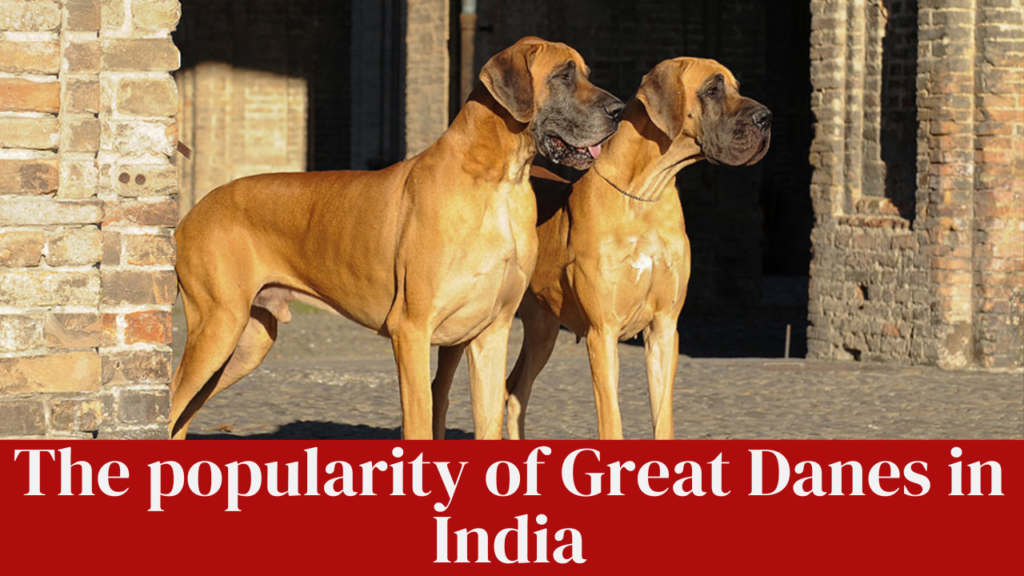
Great Danes have gained popularity in India as an admired and sought-after breed among dog enthusiasts. Their majestic appearance, gentle nature, and imposing size have captured the attention of many potential owners. Great Danes are known for their friendly and loyal temperament, making them suitable as family pets and companions.
Their ability to get along well with children and other pets, when properly socialized, has further contributed to their popularity. The breed’s regal and dignified presence appeals to those looking for an impressive and eye-catching canine companion. While Great Danes are a large breed and require adequate space and exercise, their popularity in India continues to grow due to their loving nature and their ability to form strong bonds with their families.
You May Also Like
Factors Influencing Great Dane Price In India
Several factors can influence the price of Great Danes in India. Here are some key factors that determine the Great Dane price in India market:
Breeder Reputation and Quality: The reputation and quality of the breeder play a significant role in determining the Great Dane price in India. Well-known and reputable breeders who have a track record of producing healthy and high-quality puppies tend to charge higher prices.
Pedigree and Bloodline: Great Danes with exceptional pedigrees and bloodlines, which include champion or show-winning dogs in their lineage, often command higher prices. The lineage and the titles held by the dog’s ancestors can significantly impact its value.
Physical Conformation: Dogs that meet the breed standards and exhibit desirable physical attributes, such as correct proportions, good bone structure, and well-defined features, may have a higher price tag compared to those with less ideal conformation.
Coat Color and Markings: Certain coat colors and markings, such as harlequin, mantle, and blue, are more sought after and can influence the Great Dane price in India. Rare or unique coat colors or patterns may also command a premium.
Health Screening and Certifications: Responsible breeders typically conduct health screenings and obtain certifications for their breeding dogs to ensure they are free from common genetic health issues. Puppies from health-tested parents may be priced higher due to the reduced risk of inherited conditions.
Age and Availability: The age can affect the Great Dane price in India. Younger puppies are generally more expensive than older ones. Additionally, the availability in a particular region or at a specific time can impact the Great Dane cost in India, as supply and demand dynamics come into play.
Location and Breeder Expenses: The location of the breeder and the costs associated with raising the puppies can influence the Great Dane price in India. Breeders in metropolitan areas with higher living costs may charge more to cover their expenses, including veterinary care, food, vaccinations, and other breeding-related costs.
Comparison to other popular dog breeds
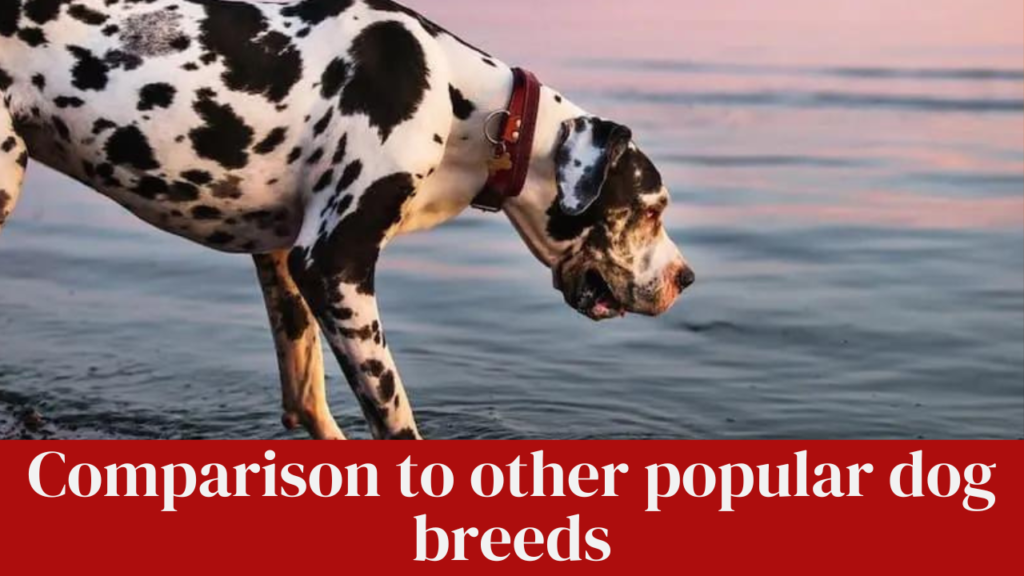
In India, Great Danes are often compared to other popular dog breeds based on various factors such as temperament, size, exercise needs, and suitability for different lifestyles. Here are some comparisons to other popular dog breeds in India:
1. Labrador Retriever:
Labrador Retrievers are one of the most popular breeds in India. They are known for their friendly and outgoing nature, making them great family pets. Labradors are medium-sized dogs, whereas Great Danes are much larger. Labradors require regular exercise but generally have lower exercise needs compared to Great Danes. They are also versatile and often used as working dogs, particularly in roles such as therapy or assistance dogs.
2. Golden Retriever:
Golden Retrievers are another beloved breed in India. They share similar characteristics with Labradors, such as being friendly, affectionate, and good with families and children. Golden Retrievers are also medium-sized dogs and have moderate exercise requirements. They are known for their intelligence and trainability. In contrast, Great Danes have a more imposing size and may require more space and exercise.
3. German Shepherd:
German Shepherds are widely recognized for their intelligence, loyalty, and versatility. They are large, strong dogs and are commonly used in various working roles, including as police or guard dogs. German Shepherds have high exercise and mental stimulation needs and thrive with an active and experienced owner. Great Danes, on the other hand, have a different temperament and are generally known for their gentle nature and calm demeanor.
4. Beagle:
Beagles are small to medium-sized dogs known for their friendly and sociable nature. They are often considered a good choice for families and apartment living due to their size and moderate exercise requirements. Beagles are energetic and enjoy outdoor activities like sniffing and tracking. Great Danes, being much larger and requiring more space, may not be as well-suited for apartment living and may have different exercise needs.
5. Pomeranian:
Pomeranians are small, fluffy dogs that have gained popularity in India. They are known for their vibrant personalities and are often seen as companion dogs. Pomeranians require less exercise and space compared to Great Danes, and their grooming needs are different as well. They are suitable for individuals or families looking for a smaller-sized, energetic, and lively breed.
History Of The Great Dane Breed
The history of the Great Dane breed is believed to date back to ancient times. The breed’s ancestors can be traced to ancient Egypt, where large, powerful dogs were depicted in carvings and artwork. However, the Great Dane, as we know it today, originated in Germany. It is believed that German nobility and hunters selectively bred these dogs for their size, strength, and hunting abilities.
Over the years, these dogs were crossed with other breeds like the Irish Wolfhound and English Mastiff to further enhance their size and characteristics. The breed was initially known as “German Boarhounds” due to their role in hunting wild boars.
However, in the 19th century, they were given the name “Great Dane” to pay homage to the French naturalist Georges-Louis Leclerc, Comte de Buffon, who referred to them as “le Grand Danois” (the Great Danish). Great Danes were initially used as working dogs for various purposes, including hunting, guarding, and even serving in the military. Over time, their noble appearance and gentle nature led to their transition into beloved family pets and show dogs. Today, Great Danes are recognized worldwide for their regal presence, friendly temperament, and imposing size.
Care and maintenance costs of Great Dane
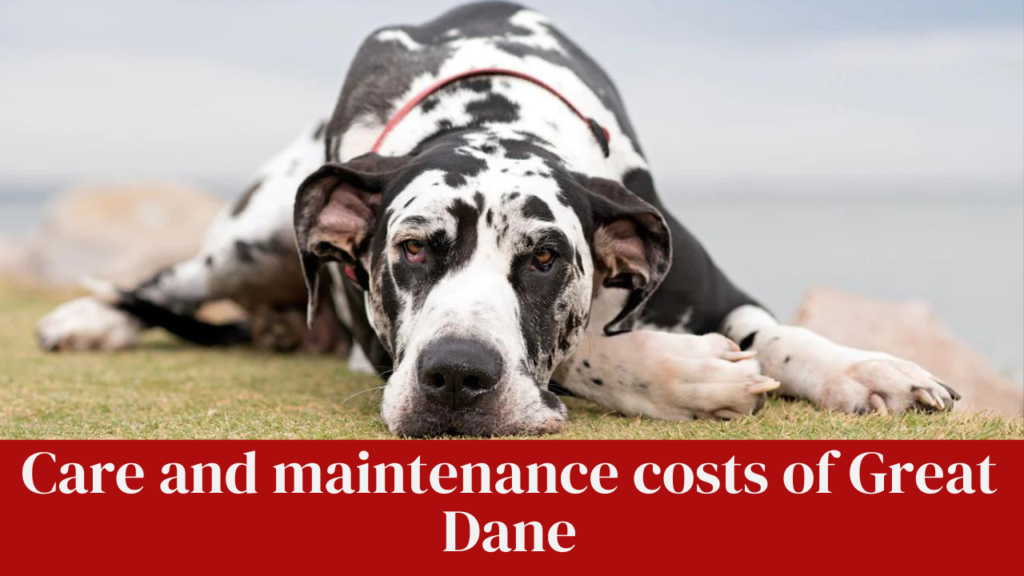
The cost of care and maintenance for a Great Dane in India can vary depending on various factors such as location, quality of care, and individual needs of the dog. Here are some common expenses to consider:
Initial Purchase: The price of a Great Dane puppy in India can range from around ₹10,000 to ₹40,000 or even higher for a show-quality dog from a reputable breeder.
Food: Great Danes are large dogs and require a significant amount of food. The cost of high-quality dog food can range from ₹2,000 to ₹5,000 per month, depending on the brand and dietary needs of the dog.
Veterinary Care: Routine veterinary expenses, including vaccinations, deworming, and annual check-ups, can cost approximately ₹3,000 to ₹5,000 per year. Additionally, unforeseen medical expenses for illnesses or emergencies can be higher.
Grooming: Great Danes have short coats and require minimal grooming. However, occasional grooming services such as nail trimming and bathing may cost around ₹500 to ₹1,000 per session, depending on the groomer.
Training and Socialization: Investing in obedience training and socialization classes is beneficial for any dog. Prices for professional training classes can vary, but they generally range from ₹5,000 to ₹15,000 for a few weeks of training.
Toys, Accessories, and Miscellaneous: Dogs require toys, bedding, bowls, leashes, and other accessories. The cost of these items can vary depending on your preferences, but you should budget around ₹2,000 to ₹5,000 initially.
Where to find Great Danes for sale in India
If you’re looking to find Great Danes for sale in India, here are a few places where you can start your search:
Reputable Breeders: Start by researching and contacting reputable Great Dane breeders in your area. You can search online for breeders who specialize in Great Danes and have a good reputation for ethical breeding practices. They can provide you with information about available puppies and their pedigrees.
Dog Shows and Exhibitions: Attend local dog shows and exhibitions, where you can meet breeders, owners, and enthusiasts who may have information about available Great Dane puppies or upcoming litters. These events provide an opportunity to interact with knowledgeable individuals in the breed community.
Online Pet Classifieds and Websites: Look for online classified websites or pet directories in India where breeders and pet owners advertise their puppies for sale. Examples of such websites include Quikr, OLX, and Click.in. Make sure to do thorough research and verification before finalizing a purchase from an online source.
Local Kennel Clubs: Contact local kennel clubs or dog associations in your city or region. They may be able to provide you with information about reputable breeders or upcoming litters.
Tips on taking care of your Great Dane
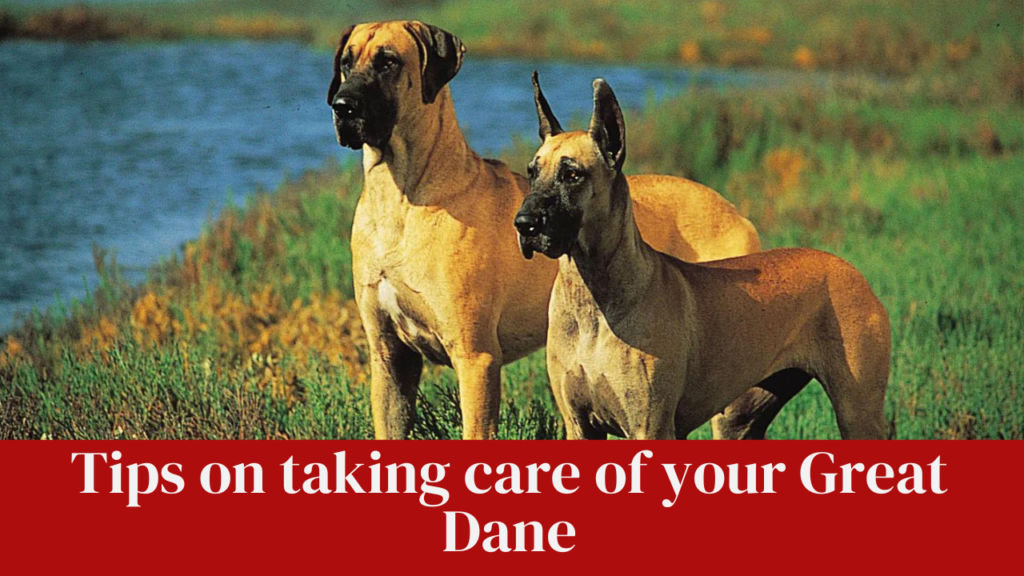
Great Danes are one of the most beautiful and majestic dog breeds out there. But owning a Great Dane also comes with great responsibility. They are gentle giants that require a lot of care, attention, and exercise. We will give you five tips on how to take care of your Great Dane.
- Firstly, diet is crucial for your Great Dane’s health. You should feed them high-quality dog food that is rich in protein and minerals. Avoid giving them table scraps or human food as it can cause harm to their digestive system.
- Secondly, regular exercise is essential for keeping your Great Dane healthy and happy. They need at least 30 minutes of daily exercise to maintain good physical health.
- Thirdly, grooming your Great Dane’s coat regularly is necessary to keep them healthy and clean. Brush their fur at least twice a week to prevent matting and shedding. It is recommended to use a rubber grooming mitt for maximum comfort and effectiveness.
- Lastly, remember to visit your veterinarian regularly with your Great Dane. This will help you maintain their good health and will also allow you to know if there are any underlying problems with your Great Dane’s health.
Final Thoughts
In conclusion, Great Danes are a majestic breed of dogs that can make great companions for the right owner. However, Great Dane price tag in India means that potential owners should carefully consider if they are able to provide for their needs before bringing one home. It’s important to remember that owning a dog is a lifelong commitment and requires significant financial investment.
By doing a thorough research and seeking advice from experts, you can make an informed decision about whether a Great Dane is the right addition to your family. Remember, adopting or rescuing a dog is also an option and can be a rewarding experience. Let’s all work towards giving every dog a loving forever home!
FAQs
Is Great Dane a guard dog?
Great Danes are not typically considered guard dogs in the traditional sense. While their size and appearance may act as a deterrent to potential intruders, their friendly and gentle nature generally makes them more suitable as family companions rather than dedicated guard dogs. However, their protective instincts can still make them alert and responsive to their family’s safety.
What 2 breeds make a Great Dane?
The Great Dane breed is believed to have originated from a combination of the Irish Wolfhound and the English Mastiff. These two breeds played a significant role in shaping the Great Dane’s size, strength, and physical characteristics.
Can Great Dane live alone?
Great Danes are social animals and thrive on human companionship. While they can adapt to living alone for moderate periods, they are generally not well-suited for long hours of solitude. They are known to be affectionate and enjoy being part of a family, so it is recommended to provide them with sufficient social interaction and companionship.
Which is bigger Great Dane or Doberman?
Great Danes are generally larger in size compared to Dobermans. On average, adult male Great Danes stand between 30 and 34 inches (76-86 cm) at the shoulder and weigh around 140-175 pounds (64-79 kg). Adult male Dobermans, on the other hand, are typically smaller, standing between 26 and 28 inches (66-71 cm) at the shoulder and weighing around 75-100 pounds (34-45 kg). It’s important to note that individual variations and specific lines within each breed can result in some overlap in size.
How much do Great Danes eat?
Great Danes are large dogs and have a healthy appetite. They require a balanced and nutritious diet to support their growth and maintain their overall health. On average, they can consume around 4 to 8 cups of high-quality dog food per day, divided into multiple meals to avoid the risk of bloat.
Are Great Danes good for apartment living?
Great Danes are large dogs and generally require ample space to move around comfortably. While they can adapt to apartment living if provided with sufficient exercise and mental stimulation, it’s important to ensure that they have access to outdoor areas for regular exercise and toilet needs. A spacious apartment or access to nearby parks would be beneficial for them.


